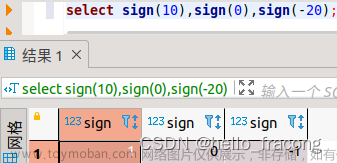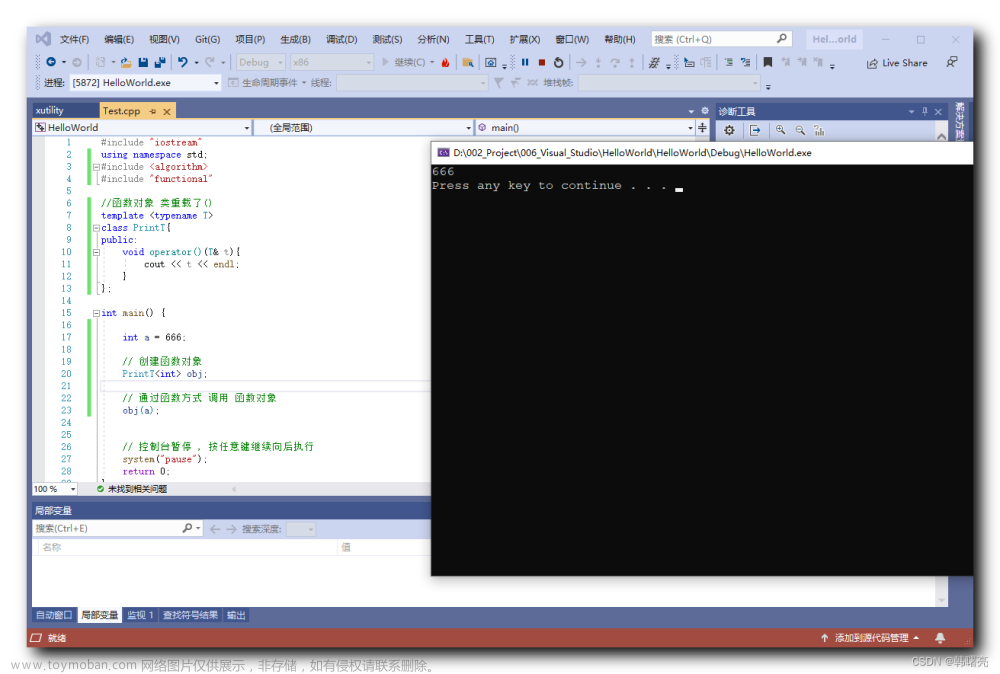一、标准SQL字符串函数和操作符
| 函数 | 返回类型 | 描述 | 示例 | 结果 |
|---|---|---|---|---|
| string||string | text | 字符串连接 | ‘Post’||‘greSQL’ | PostgreSQL |
| bit_length(string) | int | 字符串中的二进制位数的个数 | bit_length(‘jose’) | 32 |
| char_length(string) | int | 字符串中的字符个数 | char_length(‘数据库’) | 3 |
| convert(string using conversion_name) | text | 使用转换名字改变编码,转换通过create conversion来定义 | convert(‘PostgreSQL’ using ios_8859_1_to_utf8) | UTF8编码的’PostgreSQL’ |
| lower(string) | text | 字符串转为小写 | low(‘TOM’) | tom |
| octet_length | int | 字符串中的字节数 | octet_length(‘jose’) | 4 |
| overlay(string placing string from int[for int]) | text | 替换子字符串 | overlay(‘Txxxxas’ placing ‘hom’ from 2 for 4) | Thomas |
| position(substring in string) | int | 指定的子字符串的位置 | position(‘om’ in ‘Thomas’) | 3 |
| substring(string [from int][for int]) | text | 抽取子字符串 | substring(‘Thomas’ from 2 for 3) | hom |
| substring(string from pattern) | text | 抽取匹配POSIX正则表达式的子字符串 | substring(‘Thomas’ from ‘…s’) | mas |
| substring(string from pattern for escape) | text | 抽取匹配SQL正则表达式的字符串 | substring(‘Thomas’ from ‘%#“o_a#”_’ for ‘#’) | oma |
| trim([leading|trailing|both][characters] from string) | text | 从字符串string的开头/结尾/两边删除只包含characters中字符(默认是一个空白)的最长的字符串 | trim(both ‘x’ from ‘xTomxx’) | Tom |
| upper(string) | text | 字符串转化为大写 | upper(‘tom’) | TOM |
二、其他字符串函数
| 函数 | 返回类型 | 描述 | 示例 | 结果 |
|---|---|---|---|---|
| ascii(string) | int | 参数第一个字符的ASCII码 | ascii(‘a’) | 97 |
| btrim(string text [,characters text]) | text | 从string的开头或结尾删除最长的只包含characters(默认是一个空格)的字符串 | btrim(‘aaosdbaaa’,‘aa’) btrim(’ osdba ‘,’‘) btrim(’ osdba ') | osdb osdba osdba |
| chr(int) | text | 给出ASCII码的字符 | chr(97) | a |
| convert(string text,[src_encoding name,]dest_encoding name) | text | 把原来编码为src_encoding的字符串转为dest_encoding编码(省略src_encoding将使用数据库编码) | convert(‘aa’,‘UTF8’,‘GBK’) | \x6161 |
| decode(string text,type text) | bytea | 把原来用encode编码的string中的二进制数据解码,参数类型和encode相同 | decode(‘b3NkYmEAAQ==’,‘base64’) | \x6f736462610001 |
| encode(data bytea,type text) | text | 把二进制数据编码为只包含ASCII形式的数据,支持的类型有base64、hex、escape等 | encode(E’osdba\000\001’,‘base64’) | b3NkYmEAAQ== |
| initcap(string) | text | 每个单词第一个字母转为大写,其他字母转为小写 | initcap(‘hi oSdBa’) | Hi Osdba |
| length(string) | int | string中字符的数目 | length(‘osdba’) | 5 |
| lpad(string text,length int [,fill text]) | text | 通过填充字符fill(默认为空白),把string填充为length长度,如果string已经比length长,则将其尾部截断 | lpad(‘ok’,5,‘12’) | 121ok |
| ltrim(string text [,characters text]) | text | 从string开头删除包含在参数characters中的字符,直到遇到一个不在characters中的字符为止,参数characters默认空格 | ltrim(‘213osdba213’,‘123’) | osdba213 |
| md5(string) | text | 计算string的MD5散列,以十六进制返回结果 | md5(‘osdba’) | bc4e68be5b31f23d8d56c7f4c3351fec |
| pg_client_encoding() | name | 当前客户编码名称 | pg_client_encoding() | UTF8 |
| quote_ident(string) | text | 返回适合引用的给定字符串,作为SQL语句字符串中的标识符。只有在必要的情况下才添加引号(例如,如果字符串包含非标识符字符或将被大小写折叠)。 | quote_ident(‘osdba a’) | “osdba a” |
| quote_literal(string) | text | 返回适用于在SQL语句中当做文本使用的形式,嵌入的引号和反斜杠被恰当地写为双份 | quote_literal(E’O’Reilly’) | ‘O’‘Reilly’ |
| regexp_replace(string text,pattern text,replacement text[,flags text]) | text | 替换匹配POSIX正则表达式的子字符串 | regexp_replace(‘os123dba’,‘.[1-9]+’,‘#’) | o#dba |
| repeat(string text,unmber int) | text | 将string重复number次 | repeat(‘osdba’,3) | osdbaosdbaosdba |
| replace(string text,from text,to text) | text | 把字符串string中出现的所有子字符串from替换成子字符串to | replace(‘123osdba45osdba78’,‘osdba’,‘-’) | 123-45-78 |
| rpad(string text,length int[,fill text]) | text | 使用填充字符fill(默认空白),把string填充到length长度,如果string已经比length长,则从尾部将其截断 | rpad(‘os’,6,‘123’) | os1231 |
| rtrim(string text[,characters text]) | text | 从string末尾删除包含characters(默认空格)中仅包含字符的最长字符串 | rtrim(‘trimxxxx’,‘x’) | trim |
| split_part(string text,delimiter text,field int) | text | 根据delimiter分隔string返回生成的第field个子字符串(1为基) | split_part(‘123#456#789’,‘#’,2) | 456 |
| strpos(string,substring) | int | 指定子字符串的位置,和position(substring in string)一样,不过参数顺序相反 | strpos(‘osdba’,‘db’) | 3 |
| substr(string,from [,count]) | text | 抽取子字符串,和substring(string from for count)一样 | substr(‘osdba’,2,2) | sd |
| to_ascii(string text[,encoding text]) | text | 把string从其他编码转为ASCII(仅支持LATIN1,LATIN2,LATIN9,WIN1250编码) | to_ascii(‘Osdba’) | Osdba |
| to_hex(unmber int或bigint) | text | 把number转换成十六进制表现形式 | to_hex(2147483647) | 7fffffff |
| translate(string text,from text,to text) | text | 把string中包含的所有匹配from的字符转化为对应的在to中的字符 | translate(‘12345’,‘14’,‘db’) | d23b5 |
文章来源地址https://www.toymoban.com/news/detail-518100.html
文章来源:https://www.toymoban.com/news/detail-518100.html
到了这里,关于PostgreSql 字符串函数及操作符的文章就介绍完了。如果您还想了解更多内容,请在右上角搜索TOY模板网以前的文章或继续浏览下面的相关文章,希望大家以后多多支持TOY模板网!














